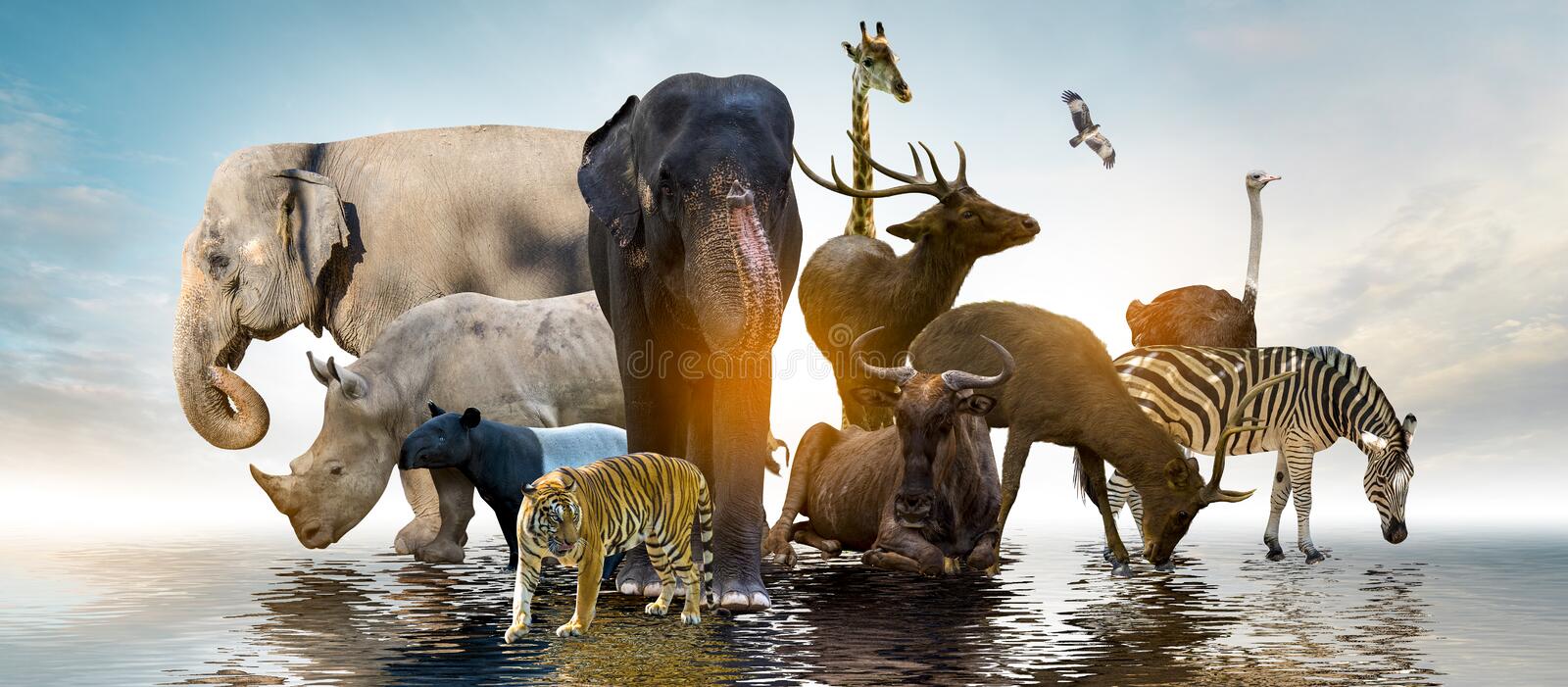Wildlife conservation refers to the practice of protecting wildlife species and their habitats in order to maintain healthy wildlife species also restore, protect or enhance natural ecosystems. Major threats to wildlife include habitat destruction, degradation, fragmentation, overexploitation, poaching, pollution and climate change. The IUCN estimates that 27,000 species of the ones assessed are at risk for extinction.
The human population has grown exponentially over the past 100 years, to more than seven billion people today, and it continues to rapidly grow. This means natural resources are being consumed faster than ever by the billions of people on the planet. This growth and development also endangers the habitats and existence of various types of wildlife around the world, particularly animals and plants that may be displaced for land development, or used for food or other human purposes. Other threats to wildlife include the introduction of invasive species from other parts of the world, climate change, pollution, hunting, fishing, and poaching.
Importance of Wildlife Conservation
Maintain Balance in the Ecosystem
On Earth, all living beings are interconnected to each other. Whether a lion or a human, every organism plays a significant role in the ecosystem. Wildlife conservation aims to maintain this interconnected ecosystem between different species.
Maintains the Food Chain
In the food chain, all living organisms are interrelated. If any single organism is removed from the food chain, it will disrupt the food chain. For instance, if all the lions are killed, then the count of herbivores will increase. This will lead to disbalance in the ecosystem.
Maintains Natural Habitat
Along with protecting animals, the maintenance of natural habitat is the secondary goal of wildlife conservation. The laws under this do not allow the cutting of trees so that the natural habitat of animals does not get disturbed.
Steps for Promoting Wildlife Conservation
- The governments of different countries form different laws for restricting the hunting of animals
- They also ensure immediate actions if anyone attempts such an act
- Many natural sanctuaries are built to preserve natural habitats for future generations
- To promote the survival of endangered species, many natural parks and sanctuaries provide habitats to endangered animals to breed
- Wildlife Conservation also ensures the protection of natural habitats from pollution and other human activities
- Pollution may ruin the natural environment of animals
- So, the governments of many countries prohibited Industrial work near the forest
- Reduced meat-eating is increasingly being promoted by various organisations, both for the protection of animals and for good health
- Governments of many countries have restricted or even banned hunting
- People have to pay a large fine if they hunt without permission
Sources: https://education.nationalgeographic.org/ https://unacademy.com/

